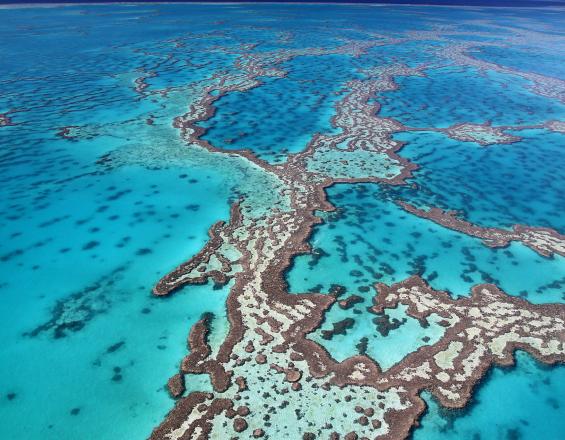Connectivité dans la Grande Barrière de Corail

Le plus grand système de récifs coralliens du monde, la Grande Barrière de Corail, est un habitat extrêmement riche en biodiversité. Les coraux qui composent le récif constituent l'épine dorsale de l'écosystème dont dépendent de nombreux animaux marins. Les courants océaniques déterminent la dynamique des populations de coraux et de l'ensemble du système récifal. La connexion des zones de pêche aux zones d'interdiction de pêche et la connexion entre les habitats côtiers et hauturiers, ainsi que les zones de forte dispersion des larves, constitueraient le moyen le plus efficace de conserver l'habitat délicat des récifs. En l'absence de données sur la dispersion des larves, il était essentiel de déterminer les meilleurs endroits pour la connectivité. Le parc marin du récif de la Grande Barrière (GBRMP) a fait l'objet d'un rezonage et d'une extension substantiels en 2003, sur la base de principes de planification systématiques. Onze principes opérationnels biophysiques (BOP) ont été élaborés pour protéger des exemples représentatifs de chacune des 70 biorégions de la Grande Barrière de Corail. Le maintien de la connectivité était également un objectif explicite du parc marin - la taille totale des réserves marines interdites à la pêche et leur emplacement individuel ont été pris en compte.
Impacts
Peu d'informations sur la connectivité étant disponibles pour le redécoupage de 2003, des approximations ont été utilisées pour concevoir des réseaux de zones d'interdiction de pêche qui garantiraient l'échange de larves entre elles, ainsi que l'exportation de larves vers les zones de pêche. Des études et des modélisations récentes démontrent que cette approche a été couronnée de succès dans une certaine mesure, la dispersion des larves reliant les zones d'interdiction de pêche à différentes échelles, depuis les zones locales jusqu'à des échanges de plus de 250 mètres.
Ce réseau de zones interdites à la pêche, qui n'a pas été conçu à partir de données explicites sur la connectivité, a néanmoins permis d'obtenir des résultats en matière de connectivité. Le GBRMP contient une très grande proportion de zones d'interdiction de pêche effectives (33% de la zone entière). On s'attend généralement à ce que des niveaux de protection plus élevés permettent d'obtenir des résultats supérieurs en matière de connectivité. Le redécoupage visait à créer un réseau "représentatif", avec des zones d'interdiction de pêche réparties entre les biorégions, les latitudes et la position transversale du plateau. Bien que ces objectifs ne mentionnent pas la connectivité, il semble que la protection des différentes zones du récif permette aux réseaux d'interdiction de protéger efficacement des éléments de biodiversité jusqu'alors inconnus. Grâce à la protection de la connectivité à travers le récif, la pêche dans les zones prescrites est grandement améliorée. La santé du récif est améliorée, ce qui permet à l'écotourisme et à l'industrie locale de prospérer.



